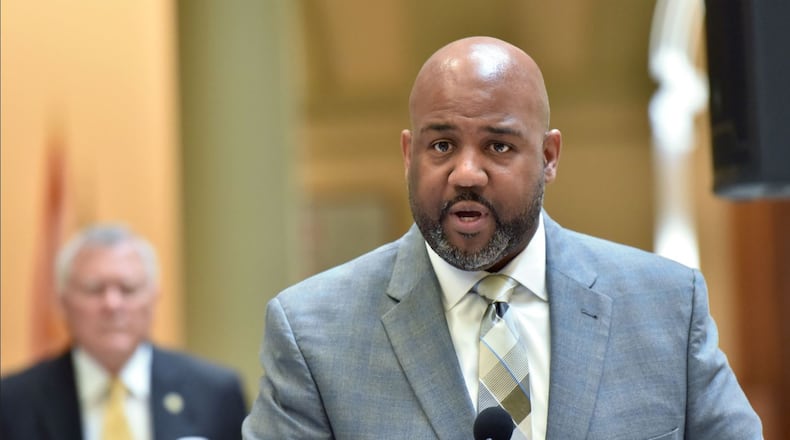Georgia’s new transit agency spent nearly $200,000 on a boardroom for its meetings — an expenditure that has come under scrutiny by state lawmakers.
The Atlanta-Region Transit Link Authority — the ATL Board for short — says it needed a bigger room to accommodate overflow crowds that have attended its first two meetings. Its first meeting in December was so packed it exceeded the room's legal capacity under state fire codes, interim Executive Director Chris Tomlinson told a Senate committee Monday.
“It’s like (the film) “Jaws,’” Tomlinson told the Senate Appropriations subcommittee on transportation. “I knew we were going to need a bigger boardroom.”
The subcommittee's chairman, Sen. Steve Gooch, R-Dahlonega, questioned the need for the boardroom. He told The Atlanta Journal-Constitution that the transit agency should have considered using other state facilities for its meetings, rather than spending taxpayer dollars on a new boardroom.
“It’s not a huge amount of money if you look at the ($27 billion) state budget,” Gooch said. “But we need to pinch our pennies.”
Lawmakers created the 16-member ATL Board last year to oversee transit funding and planning in 13 metro Atlanta counties. The same legislation allowed counties to raise money for transit by asking voters to approve new sales taxes — Gwinnett will become the first county to seek voter approval of a transit tax on March 19.
Although it’s a new state agency, the ATL Board uses most of the same staff as the State Road and Tollway Authority and the Georgia Regional Transportation Authority — Tomlinson is executive director of those other agencies as well. And the ATL Board’s first two meetings were held in the same conference room where the GRTA Board holds its meetings, in the downtown building where all three agencies are housed (SRTA meetings are held at the governor’s office).
Both ATL Board meetings were standing room-only, requiring the board use three joined conference rooms to accommodate the crowd, Tomlinson told lawmakers. That meant the rooms were unavailable for other staff meetings, which disrupted agency work, he said.
Unlike GRTA Board meetings, which are lightly attended, Tomlinson said he expects most ATL Board meetings to be well-attended because transit issues are of great public interest. He cited MARTA Board meetings, which often draw dozens of people.
“At the first meeting, we were literally over the fire code,” Tomlinson said. “We had three rooms, and people standing in the break room who couldn’t hear anything.”
The new boardroom cost about $305,000, but the ATL Board spent only $183,925. The remainder was covered by the agency’s landlord.
Tomlinson said the agency saved money by using the same furniture used in the old conference room. The new room will be used for the first time for the board’s March meeting.
Gooch wasn’t convinced it was a good use of taxpayer dollars. He told the AJC that other state agencies — including the Georgia Department of Transportation — have boardrooms that could accommodate ATL Board meetings. He said space is also available at the state Capitol.
“Any time we can look for ways to save taxpayer dollars, we should,” Gooch said.
Stay on top of what’s happening in Georgia government and politics at ajc.com/news/georgia-government/.
About the Author
Keep Reading
The Latest
Featured





